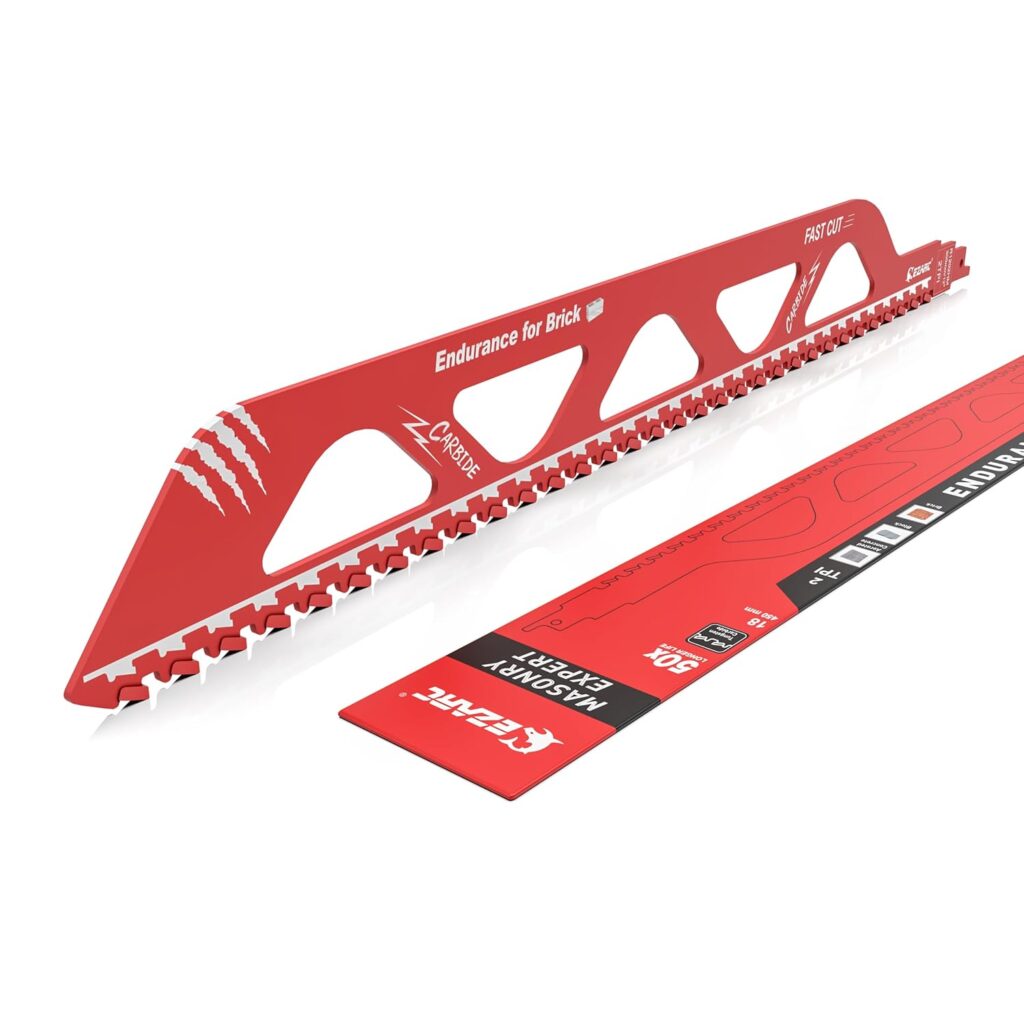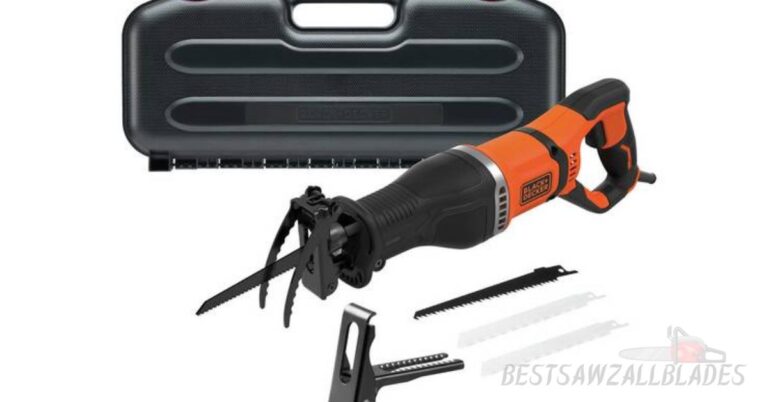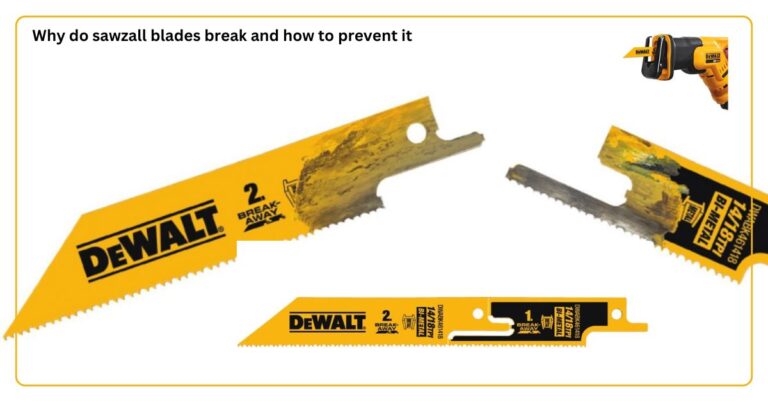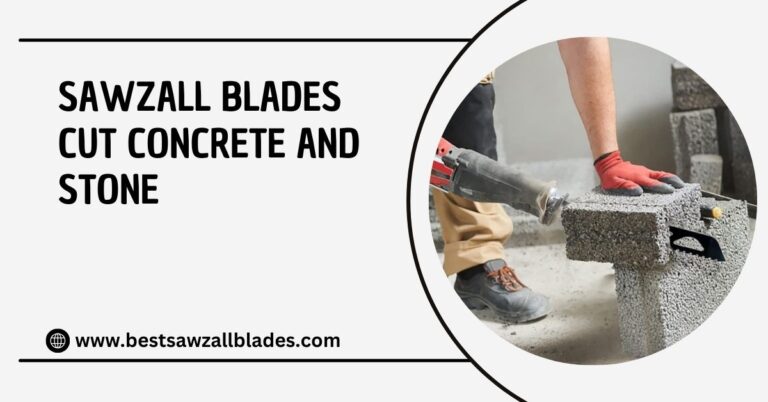When it comes to cutting plaster with a Sawzall, many people wonder if they need special Sawzall blades. The truth is, yes, choosing the right blade makes a big difference. However, it doesn’t always have to be a “special” blade; instead, you need one designed to handle the unique challenges of plaster, such as its hardness, brittleness, and the possibility of hitting lath or embedded nails. Using the right Sawzall blade for plaster ensures cleaner cuts, less dust, and longer blade life.
Choosing the Right Sawzall Blade for Plaster
When it comes to cutting plaster with a Sawzall, picking the right blade is crucial for clean, efficient cuts and longer tool life. Here’s what to keep in mind:
Blade Material
Plaster is a hard, brittle material, so you need a blade built for durability. Bi-metal Sawzall blades are a top choice; they combine high-carbon steel (flexibility) with high-speed steel (HSS) (heat resistance) to handle tough cuts.
Tooth Configuration
The tooth design is just as important as the blade material. For plaster, you want teeth that cut efficiently without clogging or breaking.
You’ll also notice blades labeled with TPI (teeth per inch). Do you know what TPI is and why it is important . A lower TPI (fewer teeth) cuts faster through dense plaster, while higher TPI blades (more teeth) give smoother cuts but may clog or dull quickly in plaster.
Blade Length
Longer blades make deeper cuts and help reach into tight spots behind plaster walls. Just note, while they’re great for thick plaster, they can be harder to control in small spaces, so choose a length that matches your project.
Universal or Specialty Blades
Many people ask, “Are Sawzall blades universal?” The answer is yes in terms of fitting the tool; most Sawzall blades are interchangeable across different reciprocating saws, but the cutting performance depends entirely on the blade design. You don’t always need a specialty plaster blade. A heavy-duty bi-metal blade works well for plaster without metal reinforcement. But if you’re cutting into plaster with embedded metal lath, a carbide-tipped Sawzall blade is the smart choice for cleaner cuts and longer life.Using the right Sawzall blade for plaster not only speeds up your work but also reduces blade wear, dust, and frustration.
Best Sawzall blade For Plaster

EZARC Demolition Masonry Reciprocating Saw Blade
Tips for Cutting Plaster with a Sawzall
Using the right blade improves efficiency and saves time, since you’ll spend less effort forcing the cut, your blades will last longer, and you’ll avoid costly mistakes like cracked plaster. Even with the right Sawzall blade for plaster, technique matters just as much as blade choice. Follow these tips to get smooth, clean cuts without damaging the surrounding areas.
Sawzall blades break when too much pressure, side-loading, or the wrong material choice is involved. To prevent breakage, let the blade do the work, use the right TPI, and avoid forcing cuts through hidden nails without a carbide tip.
Conclusion
You don’t always need a special plaster blade for your Sawzall, but using the right one makes a big difference. A bi-metal blade is ideal for standard plaster, while a carbide-tipped blade easily handles plaster with embedded metal lath. Pair the right blade with proper cutting speed, vibration control, and safety precautions, and you’ll get cleaner cuts, less dust, and a safer working environment.
Frequently Asked Questions
Do I need a special Sawzall blade for cutting plaster?
Not necessarily. While a specialty plaster blade can help, a heavy-duty bi-metal Sawzall blade works well for standard plaster. For plaster with metal lath, a carbide-tipped blade is the better choice.
What’s the best Sawzall blade material for plaster?
Bi-metal blades (high-carbon + high-speed steel) are durable and flexible, making them ideal for plaster. For reinforced plaster with metal lath, go with a carbide-tipped blade for extended life.
What tooth configuration works best for plaster cutting?
Choose blades with an aggressive tooth pitch and coarse teeth. This design slices through dense plaster and lath more efficiently without clogging or breaking.
Should I use a long or short Sawzall blade for plaster?
Longer blades are better for deep cuts or hard-to-reach areas, but they can be harder to control in tight spaces. Pick the length that fits your project.
How can I prevent plaster from cracking while cutting?
Use a moderate cutting speed, keep vibration to a minimum by holding the Sawzall steady, and consider scoring the surface with a utility knife first.
Is cutting plaster with a Sawzall messy?
Yes, plaster cutting produces fine dust, especially if it contains metal lath. Always wear a dust mask or respirator and safety goggles.
Can I cut plaster that has embedded nails or screws?
Yes, but it’s best to use a carbide-tipped Sawzall blade to handle the metal without damaging the blade or causing jagged cuts





